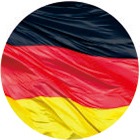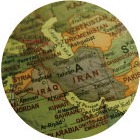
What Does Each Goethe-Zertifikat Level Cover?
Buy Goethe-Zertifikat A1, Buy Goethe-Zertifikat A1, Buy Germany Fake Certificate, The Goethe-Zertifikat levels correspond to the proficiency levels outlined in the Common European Framework of Reference for Languages, so you’ve got A1 and A2 (beginner), B1 and B2 (intermediate) and C1 and C2 (advanced). These increase in difficulty quite rapidly as you go on.
A1-A2 Goethe-Zertifikat:
The A levels are designed for people with between 100 and 300 hours of German study time, though of course that figure is different for everyone.
An A1 speaker is pretty limited by most people’s definition. They stick to a lot of pre-rehearsed language and memorized phrases. They might be able to read and write simple personal information on a form and understand someone speaking very slowly and clearly, but they really just know enough to get by.
A2 speakers are beginning to communicate more independently. They’ll likely be able to recognize most of the spoken and written language related to their daily activities.
When speaking, they can go slightly beyond memorized phrases to describe themselves, the people they know and what they do or don’t like to do.
B1-B2 Goethe-Zertifikat:
People are usually able to get to the B1 level with 300 to 600 hours of study. At B2, the difficulty starts ramping up and the Goethe-Institut recommends closer to 800 hours before taking the B2 test.
At this level, it’s extremely important to be able to use the language as it’s used in real-life situations. This means that you’ll have to move away from textbook use and into native materials.
Although this may seem scary at first, the internet is full of resources that can make this one of the most fun stages to be at. For instance, you could learn German using the authentic material FluentU, which makes real German videos approachable for any level using interactive subtitles (in German and English), multimedia flashcards and personalized quizzes.
B1 speakers are excellent tourists. They can comfortably handle pretty much any travel situation as it arises spontaneously.
They can read and write straightforward texts about familiar topics. It may still be too hard to comprehend native German movies or TV, but when speaking with others they can usually get by in conversation with some pauses and fumbling.
B2 is where it starts getting good. A strong B2 speaker would be regarded as “fluent” by most people. They have few comprehension problems in general, though on unfamiliar topics they might need the other person to slow down or repeat a few things.
They can speak accurately and at length on topics they’re knowledgeable about and have little trouble preparing and delivering presentations or brief written reports.
C1-C2 Goethe-Zertifikat:
The C levels are designated “Advanced” by the Goethe-Institut for good reason.
While levels A1 to B2 are focused on grasping the structure of the language and understanding its standard usage, the C levels are about understanding the finer nuances of the language, and speaking with style.
The difference between C1 and C2 speakers is mainly in how comfortable they are with nuances of meaning and dealing with what they don’t know.
C1 speakers speak fluently, but they may have to use circumlocution more often, like saying “the type of vegetable that grows underground” instead of “root vegetable.”
C2 speakers have extremely large vocabularies numbering in the tens of thousands, covering well-known cultural references, and if they don’t know the precise word for what they mean they can usually get pretty close with a related synonym.
Note that this doesn’t mean that they have to always speak at the same level as a native. That type of overall mastery is rare and actually requires decades of work.
















